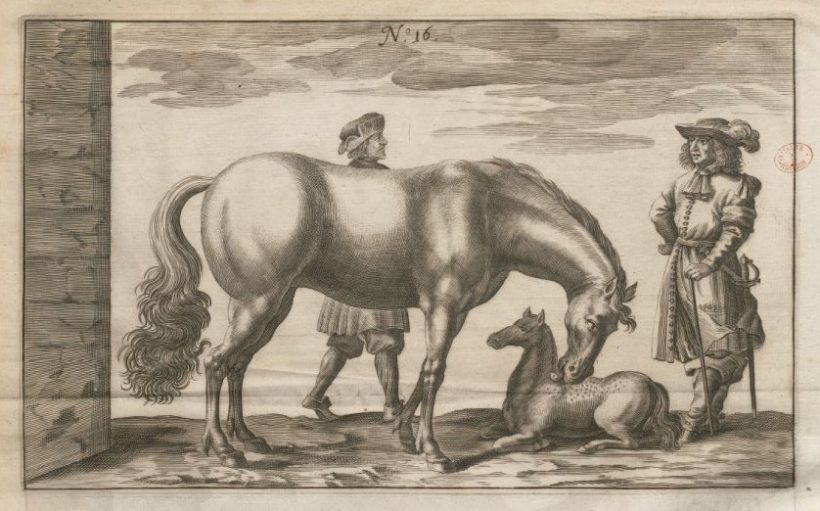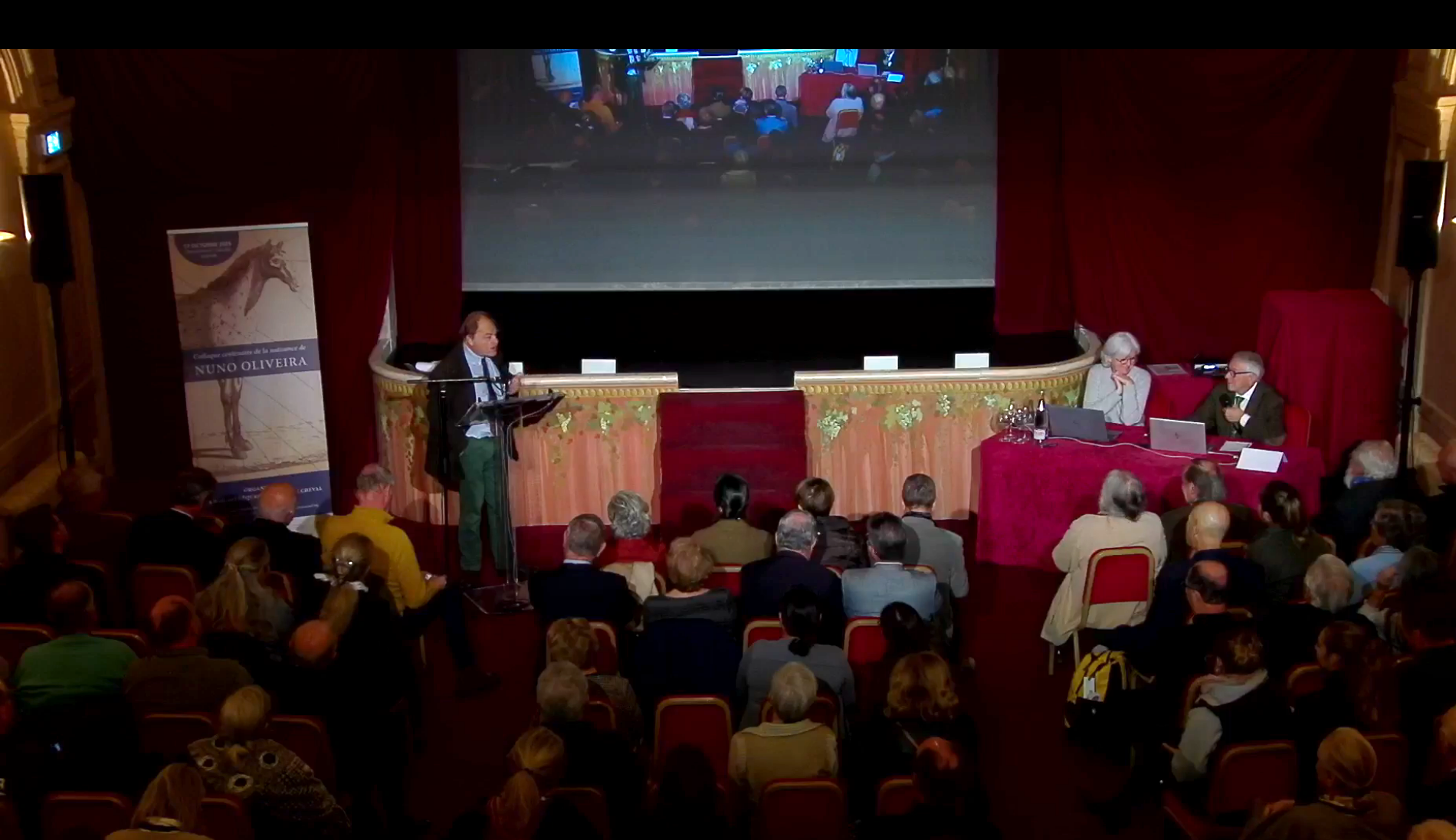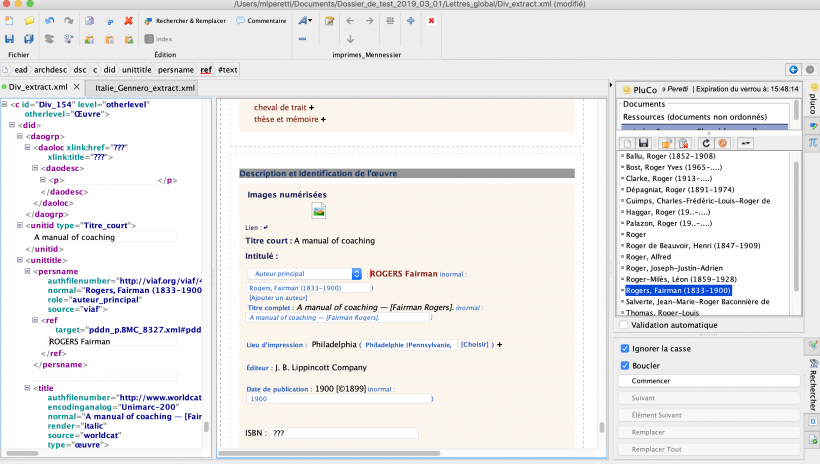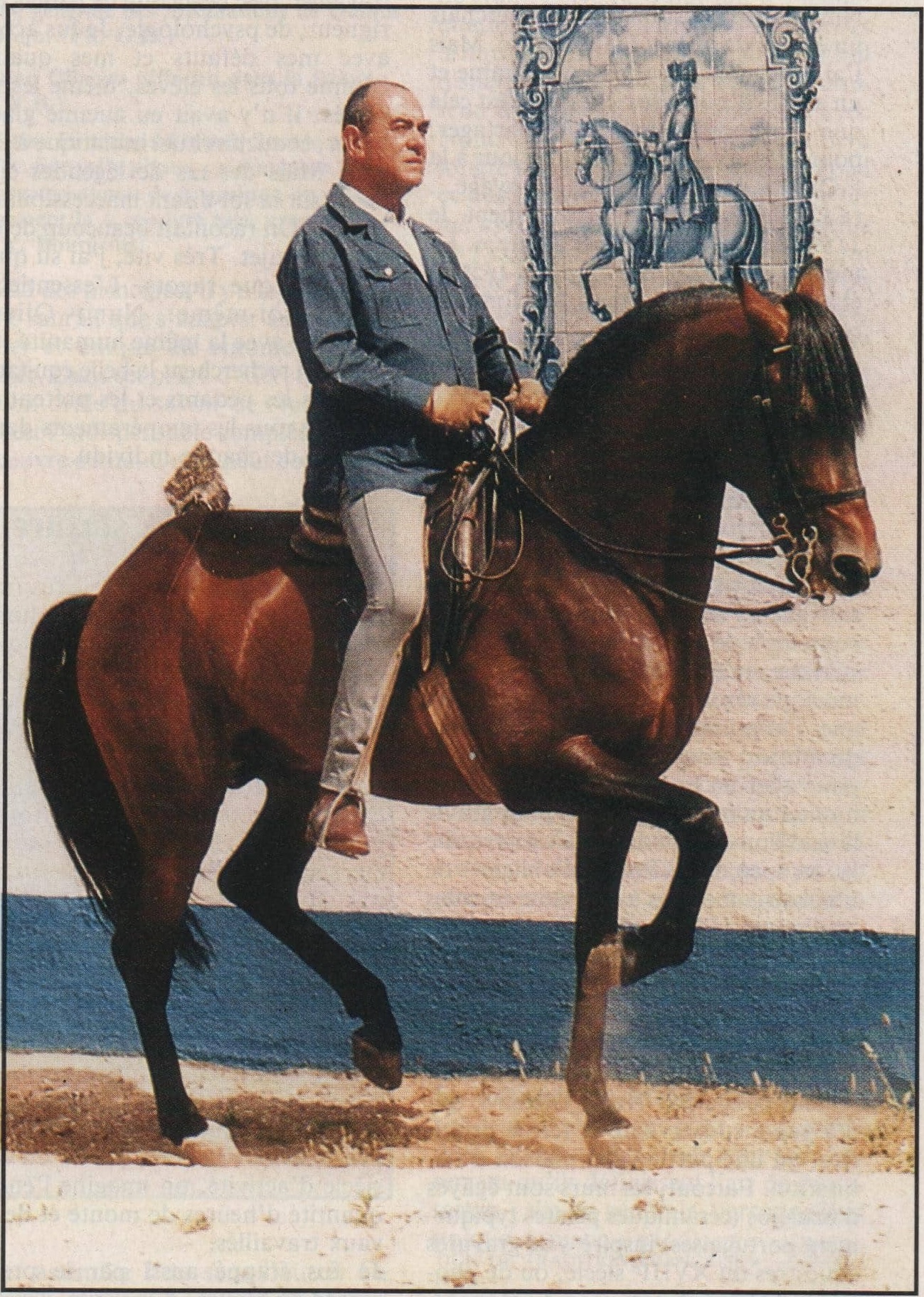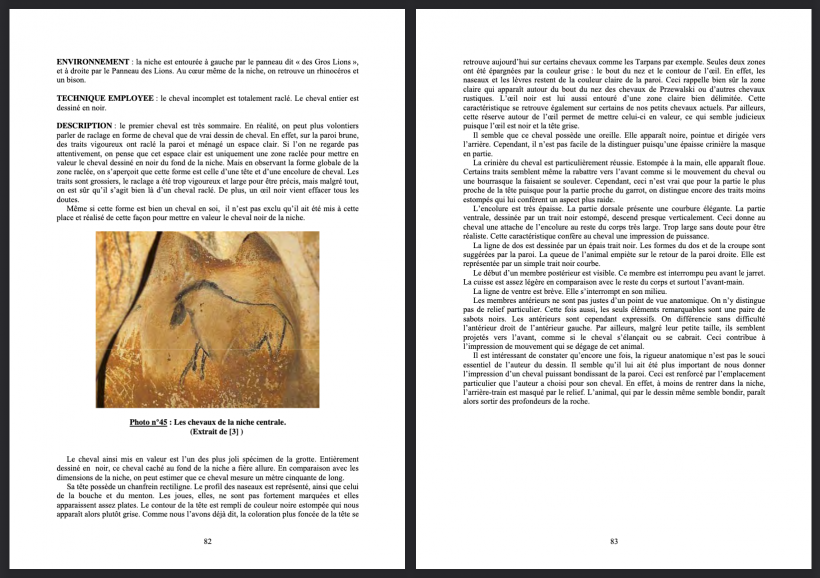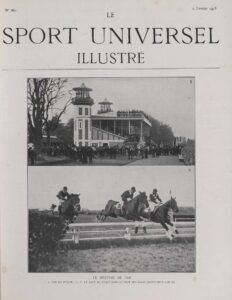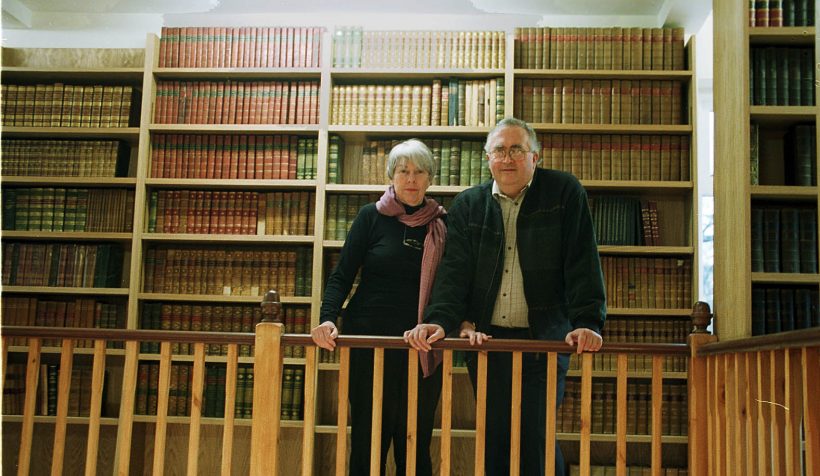
Tim Cox's Great Library
With more than 18,000 references and therefore as many books and documents devoted exclusively to racing and thoroughbreds collected over forty years, Tim Cox could appear to be eccentric, bulimic, insane.
And yet, it was a completely different man, discreet, affable, sensitive, measured, who received us in his small mansion in Dorking (Surrey) which he enlarged at the end of his professional career in order to house "the Cox Library".
X.L. — It is said, Tim, that you have the largest private collection of books and documents on gallop racing and thoroughbred racing in the world. Is that correct?
T.C . —I don't know because there is no audit of libraries devoted to these topics. But I think so.
X.L. — Before we go back to the constitution of your fund, how many elements are we talking about globally?
T.C.: I've never counted books, but I estimate that there are about 18,000 items in the Library.
X.L. — And books only?
T.C. — I defined my collecting policy as "books and other printed materials relating to world history and the organization of horse racing and thoroughbred breeding, in fact and fiction." Other printed materials are very diverse and include magazines, newspapers, programs, diaries, printed matter, postcards, business cards, cigarette cards, photographs, postage stamps, games and ephemera such as betting tickets and cardboard racing badges, various documents; therefore, almost anything that can be related to thoroughbred horse racing.
X.L. — What other collector would have gone so far in the same field, in your opinion?
T.C . —I don't know anyone else who has tried to build such a collection. But if there is, I'd be happy to get to see it.
X.L. — Where and when did this taste for horses and especially the world of racing come from?
T.C . —My interest in horse racing dates back to 1970, when I first went to races, to see Nijinsky win the King George Cup and the Queen Elizabeth Stakes at Ascot. However, it wasn't until 1975 that I started collecting books seriously.
X.L. — A family affair?
T.C . — I worked in advertising agencies until I retired. My family had nothing to do with horses or racing.
X.L. — Do you ride a horse?
T.C . — I've ridden horses in the past, but without much enthusiasm or skill.
X.L. — Did you have racehorses? How long?
T.C . — We owned racehorses from 1977 to 2002. I dropped out shortly after I retired.
X.L. — Tell us about your journey as an owner...
T.C . — I started as an associate member of a union made up of friends at work. After about two years, the union disbanded and I then split the horses with a friend on a 50/50 basis, which was the option I most preferred. I then had to get closer to the horses, talk directly with the trainer. You have a better understanding of what's going on.
X.L. — What are your best memories? Your joys?
T.C.: The best memories are the victories. I have a photograph of each victory hanging on the walls of the library. And the best horse we owned was Ashover, who won nine races for us.
X.L. — The worst?
T.C . — From the very beginning, one of our horses cut a tendon during a training gallop and had to be slaughtered. It is always difficult to accept such accidents.
X.L. — Horses? Exciting human encounters too, aren't they?
T.C . — I preferred to keep the horses and all that at a certain distance.
X.L. — What had been your professional activity during those years?
T.C . — I spent almost 35 years working in major advertising agencies, first in London and then abroad in New York.
X.L. — What about this attraction to books and all the documentation on the life of racing and thoroughbreds? Where does it come from?
T.C . — It's always hard to tell when an interest becomes an obsession. I knew I would want to do something when I had to retire, so the Library provided me with that opportunity, not to mention the friendships I made around the world. Horse racing covers so many different aspects of cultural life and sport that it becomes an all-absorbing activity.
The Library is available to serious researchers and it always surprises me to discover the variety of projects, sometimes unexpected, on which they work. There are simple race questions like who won what, or who spawned which classic winner. But in one day, I can answer questions about the history of racecourses in the seventeenth century, the career of a jockey in France in the 40s for a family history project, what was served at dinners organized for the Jockey Club by King Edward VII in the nineteenth century, or the architectural history of racetrack grandstands.
X.L. —How did all this happen? How did your collection come together?
T.C . —When I was traveling for work, all over the world, from Buenos Aires to Tokyo, I always tried to visit bookstores. The collection has been built slowly over time. One of the first books I collected was a collection of results from the races in England in 1727. Once you have the first volume, you need to have the second volume. And so on...
X.L. — It is said that a few years ago, in order to organize and develop your fund dedicated to the world of racing, you decided to expand your house in Dorking (Surrey) by adding a wing...
T.C . — Most people reduce their needs when they retire. We have increased the size of the house by 50% to house the library.
X.L. — How many square meters are we talking about?
T.C. — It's about 1590 square meters on three floors
X.L. — Was it necessary to devise special arrangements for that?
T.C.: Yes, because of the weight of the books; the foundation is made of two meters of concrete under the floor and the structure is a frame of steel beams.
X.L. — What did your neighbours think when they saw the expansion?
T.C. —There were no problems with the neighbours. They live far away.
X.L.: And, if I may say so, your wife?
T.C . — My wife was happy about it. We had books all over the house and rooms full of them. She breathed a sigh of relief when they were moved to the new wing.
X.L. — How did you classify and organize your collection?
T.C . — The collection is organized according to the Loder bibliography. In 1978, Eileen Loder published her Bibliography of Books on Horse Racing and English Thoroughbred Breeding. She classified books into broad categories like jockeys and racing, ownership, training and training methods, or poetry and I continued that classification. I added a group, which was “Fiction”.
X.L. — Physically in the Library? Or on the Internet?
T.C . — I'm continuing the same Eileen Loder classification on the shelves and I've put a complete list of books on the Internet at www.thecoxlibrary. The collection is listed in numerical order, but can be accessed in a number of ways.
X.L. — Which books are closest to your heart?
T.C . — I guess a first edition of George Stubbs' The Anatomy of the Horse . The original printing dates from 1766 and my edition was published in 1786, as evidenced by the watermark in the paper used for one of the plates. I never thought I'd be able to afford a book like that. Luckily, a copy came on the market but with library stamps on each of the boards. This obviously devalued the book in the eyes of many collectors, but it meant I could buy it.
X.L. — Which ones were the hardest to find?
T.C.: It's strange. You've been looking for a book for many years. As soon as you find it, you catalogue it, go through the pages, and put it in its place on the shelf. After that, it doesn't seem so hard to find. I guess the hardest to find are the ones I'm still looking for that are on the original list in Loder's bibliography. I think I'm still looking for about 500 books from that original list of 1800 titles.
X.L. — The good surprises, the ones you didn't expect to find?
T.C . — The book I choose as the embodiment of the Library is Salim Beck's The Mongolian Horse , published in 1926. I'd been looking for it for about ten years. Mongolian ponies were the horses used for racing in the Chinese cities of Shanghai, Hong Kong, and Hankow in the late nineteenth and early twentieth centuries. I finally found the book in the archive room of The Lyrical Ballad in Saratoga, New York, USA. If I had asked for the book, I'm sure the owner of the bookstore would have denied having it in stock. I was just lucky that he let me into the reserve.
The book represents the Library's international reach. It deals with horses used by European owners for racing in Chinese cities. It was written in Russian and translated into English. It was published by French-language publishers in Tientsin, a German-dominated region at the time. I have only seen one copy.
X.L. — What are the books you are still looking for?
T.C . — There are hundreds of them I'm still looking for. Many of them are volumes or issues that are intended to complete series (especially for periodicals (NDLA).
X.L. — Which one could really be called "rare book"?
T.C . — I think the rarest book I have is Notes on the Thoroughbred by Kentucky Newspapers by John L. O'Connor.
A pencil note on it says that it is one of six copies produced.
After some research I actually discovered that there were nine copies of printed, but they are all in libraries in the United States, except perhaps one. I think John O'Connor got bored with the project and destroyed the plates after these test copies were printed.
X.L. — Can you give us the name of one or more collectors with whom you are exchanging?
T.C . — I'm not particularly in contact with other serious collectors. However, I am grateful to researchers and authors who have worked on the basis of books or documentation found in my library to send me a copy of the results of their work. I don't charge for the use of the Library, and I think a copy of their book or article is enough compensation. I have the impression that the Library is in its best role, that of the work it enriches and enables.
X.L. — And your relationship with the institutions of the racing world: the Jockey Club? France Galop?
T.C . — I've maintained my independence, mainly because I want to be able to decide what I do without the idea of a committee. I am happy to do research work for the Jockey Club, France Galop or the Direktorium für Vollblutzucht und Rennen in Germany.
X.L. — What is your goal, your ambition through or with this collection? Commercial? Philanthropic?
T.C . — My ambition, beyond personal interest, is to build the finest and most complete library covering all aspects of galloping racing and thoroughbred breeding, from the early days to the present day.
X.L. — What remains to be done to make your collection as accessible as possible?
T.C . — I would like to be able to produce a detailed index of the contents of all the books in the Library. Thus, the search would be much easier and faster. Alas, I think it's beyond my resources.
X.L. — Is it a priority?
T.C . — Not really. I always like to look for books and add them to the collection.
X.L. — How do you see the future of your collection?
T.C . — Ideally, if arrangements can be made, I would like the collection to be kept, moved to Newmarket and used as a starting stock for a national racing and thoroughbred collection in the UK.
X.L. – Do you think that one day you will say: "enough"?
T.C . — No. I might get a little more selective as space becomes an issue. But for the moment, I don't see the end of the collection. As long as books are published, I will stay in the market.
X.L. — Do you intend to pass on your funds to your descendants?
T.C . — None of my descendants want to own the Library, but if one of my grandchildren showed a real interest, maybe.
X.L. — Do you intend to sell it to the highest bidder one day?
T.C . — No. It is not a commercial enterprise. But I know that I used my family's money to build the collection, so when the time comes, I would like to see the collection paid for at its fair price. Even with conditions. If that's not possible, I guess my executors will have to sell it in individual lots.
X.L. — Are there amateurs in the world for such a wealth of knowledge?
T.C . — I answered questions from researchers and collectors from all continents. As the world shrinks thanks to better communications, there is a thirst for knowledge. The only thing I've learned in the 40-plus years of collecting is how much we don't know.
X.L. — Would you give an institution a day to continue its development?
T.C . — As I said before, I would like the collection to form the basis of a national collection.
X.L. — Have you ever regretted having launched such a project?
T.C . — Absolutely no regrets.
X.L. — This mass of accumulated documentation allows you to have a point of view on the evolution of racing and horses over the last three centuries. Can you try to summarize?
T.C . — Horse racing is a simple sport. I bet my horse is faster than yours. And to prove it, I'm willing to spend millions to buy the best horses, to hire the best trainers, and to race around the world in places that have the best races. Few of us can spend millions, but we all have the same dream. With all this investment and brainpower, what surprises me is how little we know about breeding a better and faster horse. The luck factor is still important in the breeding of the champion horse. And that's why horse racing is still a lot of fun.
X.L. — What do you think about what could happen to racing and racehorses; about the perception of the use of horses in our increasingly "urban" societies?
In England and Ireland?
In Europe?
Worldwide?
T.C.: ---- I'm worried about the long-term future of horse racing. Over the past two hundred years, there has been growing concern about the welfare of horses and the use of horses (and other animals) for human entertainment. We are seeing a reduction in the use of live animals in circuses as societies around the world become more enlightened.
There is a clear gap between 'urban' and 'rural' attitudes towards rural sports, including horse racing. As urban life continues to grow, I expect urban attitudes to dominate the debate. I think the racing authorities need to be aware of this and ensure that any practice, such as the misuse of the riding crop, is banned that could jeopardise the long-term future of the sport.
X.L. — At the end of the day, if you had known, before you started collecting, how far would you have gone in terms of time and money (any number)?
T.C . — I chose not to keep a record of the amount of money I spent on this project. It's a labour of love. Sometimes I wonder if I should have put so much energy and resources into such a project, and then I answer another question for a researcher who asks me about this question or that book and I think it is all justified.
X.L. — A wish or a regret?
T.C . — No regrets. And a hope that the World Horse Library project will be a long-term success.
X.L. — Your conclusion...
T.C . — I've come a long way toward my long-term goal, but the work isn't done. I wonder whether, in the digital world of fifty years, such a project based on the old printing technology will make sense, and I think it will. The paper in old books seems to have a longevity that is lacking in the digital world.
Interview by Xavier Libbrecht
Learn more:
